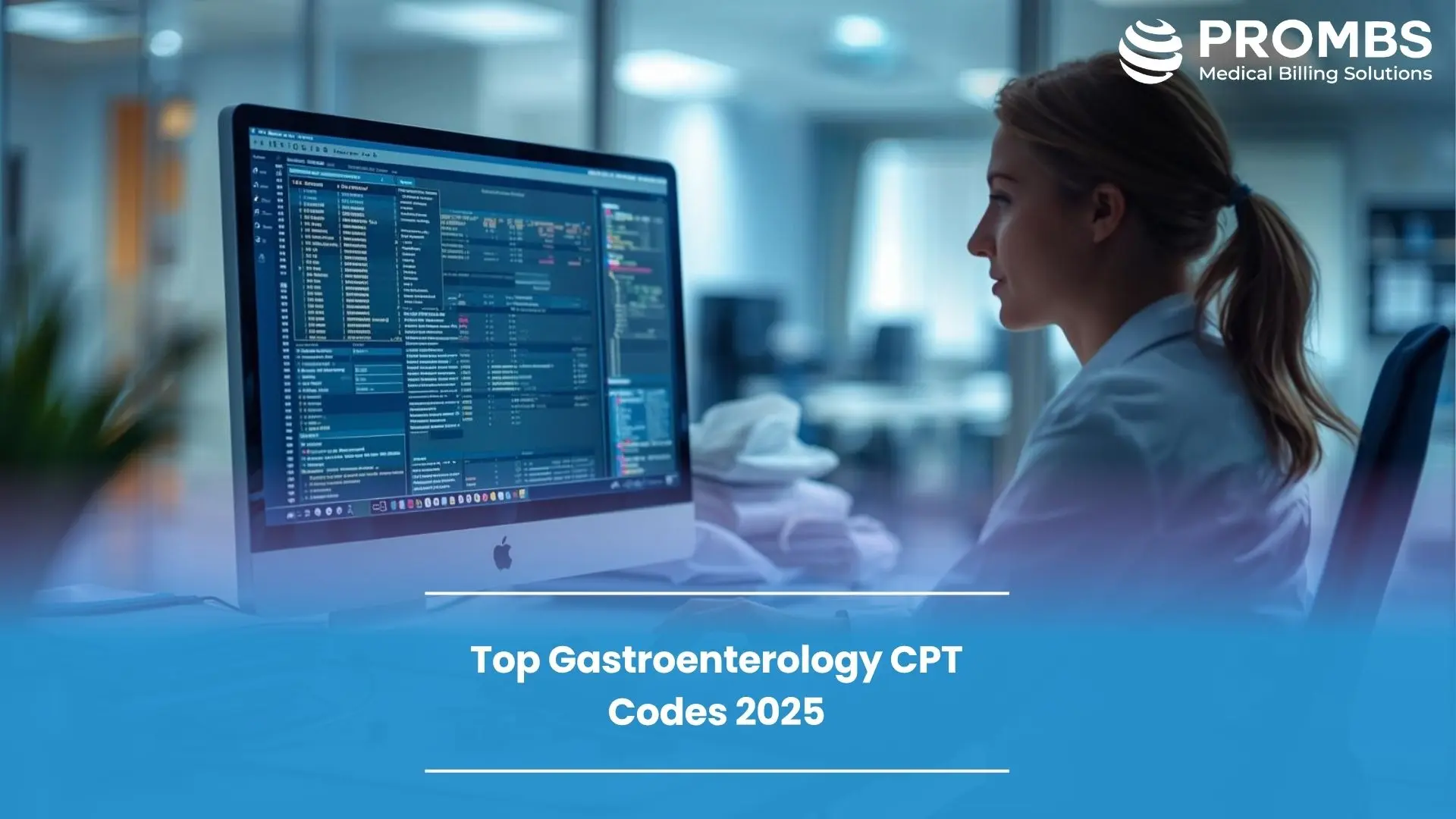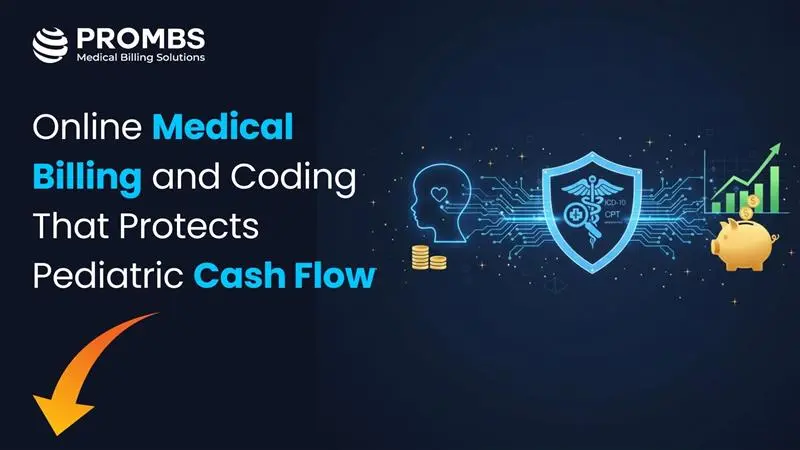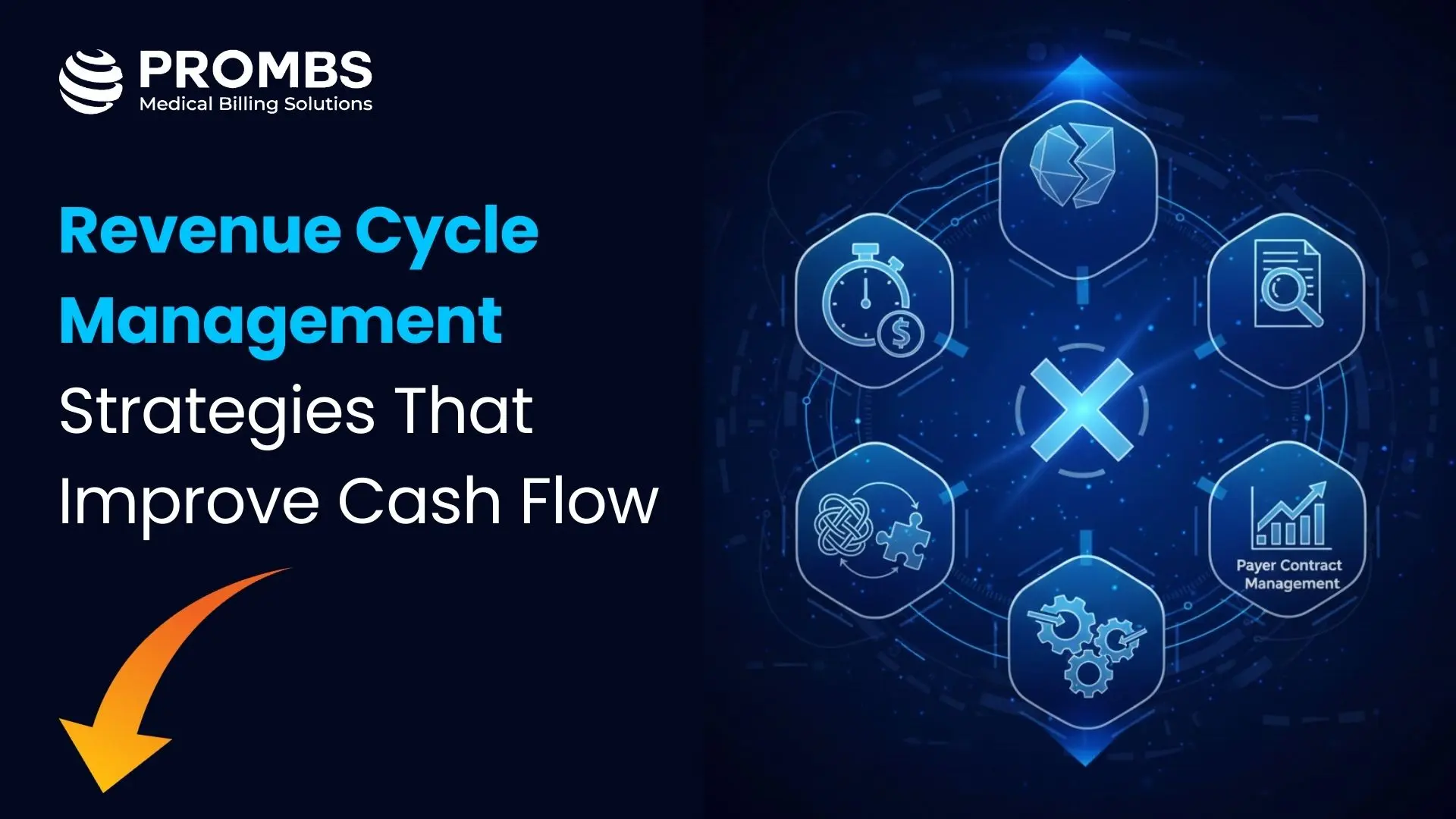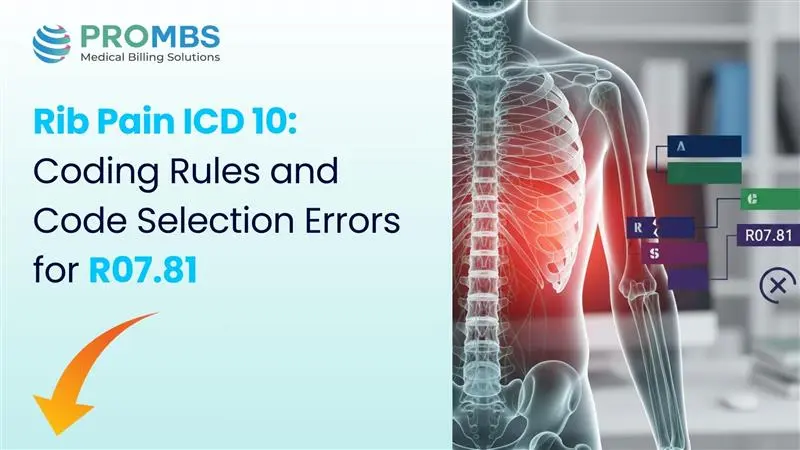Gastroenterology CPT codes are the foundation of every successful GI billing process. When coded correctly, they ensure faster payments, fewer denials, and steady revenue flow. But when even one detail is missed, a routine claim can be delayed or denied.
In 2025, payers are paying closer attention to documentation and coding accuracy than ever before. Each note, modifier and diagnosis must clearly explain why the procedure was performed. Accurate reporting is not only about compliance; it also affects how quickly and completely a practice gets paid.
The AMA CPT® 2025 Manual identifies three codes that form the core of gastroenterology billing: CPT 43239, CPT 45378, and CPT 91110. These represent upper, lower, as well as small bowel procedures that most GI practices perform every day. Understanding how to document and bill these correctly can mean the difference between a clean claim and a costly denial.
Understanding CPT 43239: Upper GI Endoscopy with Biopsy
CPT 43239 is used when a gastroenterologist performs an upper endoscopy to look inside the esophagus, stomach, and the first part of the small intestine (duodenum). During this procedure, the doctor inserts a thin, flexible tube with a light and camera to examine the upper GI tract and collect tissue samples, called biopsies, for lab analysis. This single code covers both the scope procedure and the biopsy portion.
When to Use CPT 43239 for Upper GI Endoscopy?
Doctors usually perform CPT 43239 when patients have ongoing upper digestive symptoms that need a closer look. It helps identify the cause of chronic heartburn, unexplained stomach pain, trouble swallowing, nausea, vomiting, or gastrointestinal bleeding. The procedure is also used to confirm conditions such as gastritis, esophagitis, Barretts esophagus, celiac disease, or even early-stage cancer.
According to AAPC guidelines, CPT 43239 must be used whenever tissue samples are taken, even if the doctor doesn’t see any obvious abnormalities during the exam. Biopsies help detect microscopic changes that visual inspection might miss, making this step crucial for both diagnosis and compliance.
How to Correctly Document CPT 43239?
The report should paint a clear picture of what happened. Make sure it includes:
- What was seen: List every area checked, such as the esophagus, stomach, and duodenum.
- What was done: State how many biopsies were taken, where they came from, and what tool was used.
- Why it was needed: Explain the reason, like checking for Barrett’s esophagus or celiac disease.
- What was found: Describe ulcers, bleeding, or other findings in simple terms.
Missing even one of these details can cause your claim to be delayed, denied, or flagged for medical review. Payers expect the documentation to fully support the medical necessity of every step. By following CMS LCD L33575, your reports will meet the required standards for upper GI endoscopy, clearly showing why the procedure was done, what was found, and how the results guide patient care.
Billing and Modifier Tips
Sometimes a biopsy happens along with another service like dilation or ultrasound. In those cases, you may need modifier 59 or modifier XU. The CMS NCCI Policy Manual 2025 explains which code pairs need them. Always double-check before you submit the claim.
Understanding CPT 45378: Diagnostic Colonoscopy Explained
CPT 45378 refers to a diagnostic colonoscopy, a procedure where a gastroenterologist examines the entire large intestine from the rectum to the cecum using a flexible scope with a light and camera. This code is used when the goal is to find the cause of symptoms rather than perform a routine screening. A diagnostic colonoscopy helps uncover the reasons behind issues such as rectal bleeding, chronic diarrhea, iron-deficiency anemia, abdominal pain, or unexplained weight loss. It can also detect and sometimes treat conditions like polyps, inflammation, or ulcers during the same visit.
Although CPT 45378 is one of the most common GI procedure codes, it is also one of the most frequently denied. The main reason is confusion between screening and diagnostic colonoscopies. Documenting the patient’s symptoms, reason for the procedure, and findings in detail helps clarify intent, support medical necessity, and prevent costly denials.
How to Code Screening and Diagnostic Colonoscopies the Right Way
Screening colonoscopy: This procedure is performed on patients who have no symptoms. It is a preventive test used to check for colon cancer or polyps before problems start. When it is preventive, use modifier 33 so the patient is not billed. This tells the payer the service is covered under preventive care benefits.
Diagnostic colonoscopy: This exam is ordered when a patient already has symptoms such as rectal bleeding, unexplained anemia, or changes in bowel habits. Because it is being used to investigate an existing problem, it does not qualify as a preventive service.
Converted cases: Sometimes a screening colonoscopy becomes diagnostic during the same procedure. For example, if the doctor finds and removes a polyp. In these cases, use modifier PT for Medicare or modifier 33 for commercial payers. The Medicare Benefit Policy Manual, Chapter 15 explains how this rule applies and why correct modifier use is critical for accurate payment.
| Type | Purpose | Modifier | Cost to Patient |
|---|---|---|---|
| Screening | Preventive | 33 | No charge for most payers |
| Diagnostic | Symptom-based | 59 or PT | Standard cost applies |
How to Properly Document a Colonoscopy?
Your colonoscopy report should answer a few key questions to show medical necessity and ensure accurate coding. Clear documentation also helps protect against denials and supports compliance during audits.
- Why was it done: Explain the reason for the procedure, such as screening for cancer or evaluating symptoms like bleeding or anemia.
- How far did it go: Record that the scope reached the cecum or terminal ileum and include any landmarks or challenges that affected completion.
- What did you find: Describe all findings in detail, including the presence of polyps, inflammation, bleeding, or other abnormal tissue that may require biopsy or removal.
- Was the prep adequate: Indicate whether the bowel preparation allowed a clear view or if visibility was limited, as this affects diagnostic accuracy and follow-up planning.
The U.S. Preventive Services Task Force (USPSTF) advises documenting the intent of the procedure clearly to distinguish preventive colonoscopies from diagnostic ones.
Common Documentation and Billing Mistakes to Avoid
Many colonoscopy billing errors happen because modifiers are missing, codes are duplicated, or intent is unclear. These kind of small mistakes often lead to claim rejections. Automated review tools based on UnitedHealthcare’s Colonoscopy Coding Guidelines 2024 can help identify these issues before submission, saving time and improving first-pass claim success.
Understanding CPT 91110 for Capsule Endoscopy
When to Use CPT 91110 in Gastroenterology?
The CMS Wireless Capsule Endoscopy Billing and Coding Article explains that this test is medically necessary when other endoscopic procedures fail to identify the cause of a patient’s symptoms. It is often recommended for:
- Unexplained gastrointestinal bleeding: Used when both upper and lower endoscopies show no clear cause.
- Crohn’s disease: Helps identify inflammation, ulcers, or narrowing in the small intestine.
- Iron-deficiency anemia: Detects hidden bleeding or absorption problems that are not visible on standard scopes.
- Celiac disease or tumors: Used when imaging or lab results suggest abnormalities that need confirmation.
Capsule endoscopy should never be billed for routine colon cancer screening or as a substitute for standard colonoscopy.
How to Document CPT 91110 Correctly?
A complete capsule endoscopy report should provide enough detail to show medical necessity and clinical accuracy. Include the following information in your documentation:
- Recording times: Note when the capsule started and stopped recording, and whether it passed through the digestive tract naturally.
- Supervising physician: Identify who monitored the data collection, reviewed the images, and interpreted the results.
- Findings: Summarize abnormal areas, bleeding sites, or mucosal changes, and include a clinical impression.
- Storage and signature: Ensure the report and images are saved in the patient’s medical record and signed by the interpreting physician.
The American College of Gastroenterology (ACG) advises that every capsule study include a signed interpretation and proof of image review.
Preauthorization Rules
Most insurers, including BlueCross BlueShield, require preapproval. To avoid denials, send documentation showing that prior endoscopies were negative and include the correct diagnosis code.
Avoiding Gastroenterology CPT Code Errors
Even the most experienced billing teams can face challenges when handling gastroenterology CPT codes. These mistakes can lead to denials, underpayments, or compliance risks if not caught early.
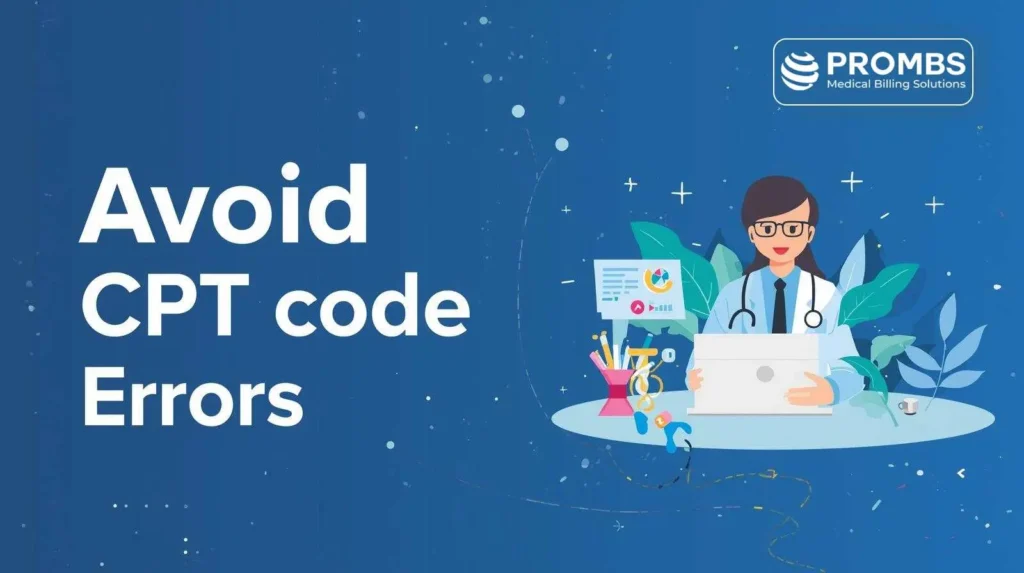
Bundled or Overlapping Procedures: Certain endoscopy procedures performed on the same day may be bundled together, resulting in reduced payments. Always review the NCCI edits and multiple-endoscopy rules to confirm which codes can be billed separately. This simple check helps you avoid missed revenue and compliance issues.
Incorrect Modifier Use: Misusing modifiers, especially modifier 59, is one of the fastest ways to trigger an audit. Only use it when a procedure is truly distinct from another performed on the same day. Keeping up with CMS NCCI Policy Manual 2025 guidelines helps ensure proper modifier application.
Weak Medical Necessity Documentation: Each claim must clearly explain why the procedure was needed. Vague notes or missing diagnosis codes can lead to denials or post-payment reviews. Always link the correct ICD-10 code to the CPT code and describe the patient’s symptoms or findings clearly.
Coordination of Benefits Issues: When patients have more than one insurer, billing errors often occur because payer order is not verified. Always confirm which plan is primary and ensure both carriers receive complete documentation. This prevents payment delays and duplicate claim denials.
How Automation and Expert Review Help?
Today’s billing tools can spot missing modifiers or wrong code combinations before claims go out. These systems check documentation against payer rules and flag errors early. The Healthcare Financial Management Association (HFMA) notes that automation can cut denials by more than 25%.
At Pro-MBS, automation works alongside certified coders who specialize in gastroenterology. Every claim is reviewed for accuracy, compliance, and payer-specific requirements. This process saves time and keeps revenue steady.
Partner with Pro-MBS for Accurate Gastroenterology Billing
Gastroenterology billing requires precision, compliance, and constant updates to meet payer and CMS standards. At Pro-MBS, our certified coders and billing experts specialize in GI and endoscopy services. We help practices reduce denials, speed up claim approvals, and protect revenue through accurate documentation and real-time code validation.
Whether you manage a hospital-based endoscopy unit or a private GI clinic, our team ensures every CPT code, modifier, and diagnosis is applied correctly.
- End-to-End GI Billing & Coding Support
- Denial Prevention & Revenue Integrity Audits
- Compliance-Ready Documentation Reviews
Ready to improve accuracy and revenue flow?
Book a Free GI Billing Audit with Pro-MBS
FAQs
How do gastroenterology CPT codes differ for diagnostic vs therapeutic procedures?
Diagnostic codes are used to identify medical conditions, while therapeutic codes apply when a treatment or intervention is performed during the procedure.
Why is accurate documentation important for gastroenterology CPT coding?
Accurate documentation helps ensure the right codes are chosen, minimizes claim denials, and supports proper reimbursement.
Can the same gastroenterology procedure have multiple CPT codes?
Yes, coding may differ based on the complexity of the procedure, the specific anatomical site involved, and whether any additional interventions were performed.
How often should gastroenterology practices review CPT coding updates?
Practices should review CPT code updates every year to stay compliant with current guidelines and ensure accurate, timely reimbursements.
What are common errors to avoid in gastroenterology CPT coding?
Common errors include choosing the wrong code for the procedure, failing to document additional interventions, and omitting required modifiers.
